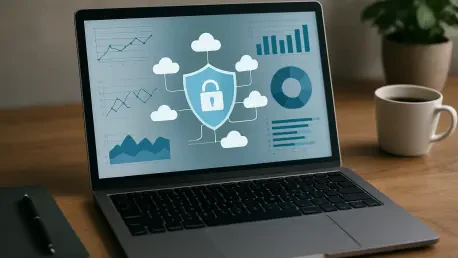Kendra Haines sits down with Matilda Bailey, a renowned networking specialist with a deep focus on cutting-edge technologies in cellular, wireless, and next-gen solutions. With her extensive expertise in cybersecurity, particularly in SaaS environments, Matilda offers invaluable insights into the evolving landscape of security strategies and data privacy. Today, we dive into the concept of the “SaaS Shared Reality,” the intricacies of cookie management, and how businesses can safeguard user data while maintaining seamless service delivery.
How would you describe the “SaaS Shared Reality” and its relevance to building a security strategy?
The “SaaS Shared Reality” refers to the unique environment where multiple stakeholders—vendors, businesses, and end-users—share responsibility for security in a cloud-based Software as a Service model. Unlike traditional setups where a single entity controls everything, SaaS involves a distributed framework. This means security isn’t just the provider’s job; it’s a collaborative effort. Understanding this shared responsibility is crucial because it shapes how you design your security strategy, ensuring that every party knows their role in protecting data and systems.
What makes developing a tailored security strategy for SaaS environments so critical for businesses today?
SaaS platforms are inherently accessible over the internet, which broadens their attack surface compared to on-premises systems. Businesses rely on these tools for critical operations, often storing sensitive data in the cloud. Without a tailored strategy, you’re exposed to risks like data breaches or misconfigurations. A specific approach ensures you address SaaS-specific vulnerabilities, like third-party integrations or lack of visibility into the provider’s security practices, which can’t be managed with a one-size-fits-all mindset.
What are some of the biggest security challenges companies face when adopting SaaS platforms?
One major challenge is the lack of control over the underlying infrastructure since the provider manages it. This can lead to blind spots in monitoring or enforcing security policies. Another issue is data privacy, especially with regulations like GDPR or CCPA, where non-compliance can result in hefty fines. Additionally, the shared nature of SaaS means that a breach at the provider’s end can impact multiple clients simultaneously. These challenges differ from on-premises systems where you have more direct oversight but require a different mindset to mitigate.
Can you walk us through the essential steps a company should take to create a robust security strategy for SaaS?
First, start with a thorough assessment of your SaaS ecosystem—identify which applications you’re using, what data they handle, and who has access. Next, establish clear policies for data encryption, access controls, and regular audits. Collaboration with the SaaS provider is key; ensure they meet your security standards through contracts or certifications. Finally, educate your team on best practices like strong passwords and recognizing phishing attempts. Prioritizing areas like data protection and compliance upfront can help prevent major issues down the line.
How does the use of user data for content delivery and advertisements fit into a broader SaaS security strategy?
When SaaS platforms process user data for content or ads, it introduces additional layers of risk because you’re handling personal information that could be exploited if not secured properly. This ties into your security strategy by necessitating strict data protection measures, like encryption and access restrictions, to prevent unauthorized use. It also means ensuring compliance with privacy laws, as mishandling this data can damage trust and lead to legal repercussions. Security here isn’t just about technology; it’s about ethical data usage too.
What steps should SaaS providers take to protect user data when utilizing cookies for analytics or advertising?
Providers need to implement robust encryption for data collected via cookies to prevent interception. They should also limit data retention periods and anonymize information wherever possible to reduce exposure. Transparency is critical—clearly communicate to users what data is being collected and why, ideally through an accessible privacy policy. Obtaining explicit user consent before deploying non-essential cookies is a must, ensuring users feel in control of their information while meeting regulatory standards.
Why is offering users control over cookie preferences, such as opting out, so important in a SaaS context?
Giving users control over cookie preferences builds trust and aligns with privacy expectations in today’s digital landscape. It shows respect for their autonomy over personal data. Blocking cookies can sometimes disrupt the user experience, like preventing personalized features or login retention, but companies can balance this by ensuring core functionalities don’t rely on optional cookies. It’s about striking a harmony between delivering a seamless service and honoring user privacy choices.
Could you explain the role of “strictly necessary cookies” in a SaaS environment and why they can’t be disabled?
Strictly necessary cookies are the backbone of basic functionality in a SaaS platform. They handle things like user authentication, session management, and privacy settings. Without them, core features like logging in or navigating the service wouldn’t work. They can’t be disabled because they’re integral to the platform’s operation. If a user tries to block them via browser settings, they’ll likely encounter errors or be unable to use the service altogether, which is why they’re exempt from consent requirements.
How do “performance cookies” contribute to improving a SaaS platform’s effectiveness?
Performance cookies collect data on how users interact with a SaaS platform, like tracking page load times, traffic sources, or which features are most used. This information helps providers identify bottlenecks or underperforming areas and optimize the service accordingly. For instance, if data shows a specific page crashes often, developers can prioritize fixing it. This not only enhances user experience but can also indirectly boost security by revealing unusual usage patterns that might indicate a threat.
What is your forecast for the future of data privacy and security in SaaS environments over the next few years?
I believe we’ll see a stronger push toward zero-trust architectures in SaaS, where no user or device is inherently trusted, even within the network. Privacy regulations will likely become stricter globally, forcing providers to adopt more transparent data practices. We might also see advancements in privacy-preserving technologies, like differential privacy, to allow data analysis without compromising individual identities. Overall, the focus will shift toward empowering users with more control over their data while holding SaaS providers to higher accountability standards.









